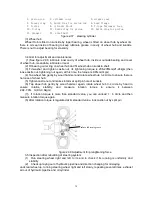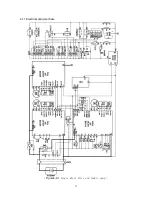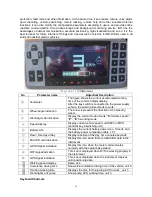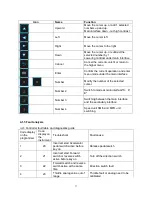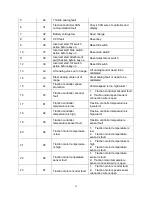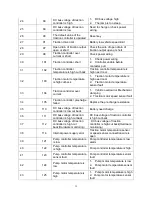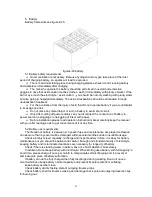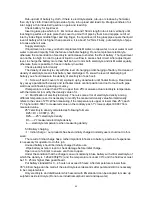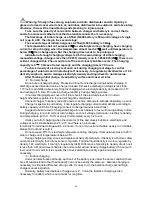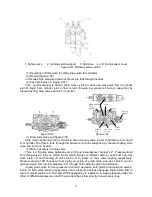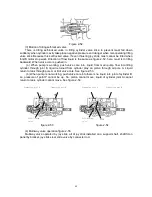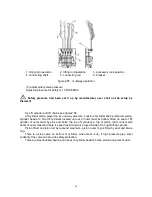
44
Rub-up dust of battery by cloth, if there is electrolyte stains, rub-up or cleanse by hot water,
then dry it by cloth. Clean dirt and oxide of pole, rub-up lead and lead clip. Dredge venthole of oil
inlet. Apply a thin industrial Vaseline on pole and lead clip.
Check battery for liquid level.
Insert a glass pipe which is 6
~
8mm inner dia.and 150mm length into oil inlet vertically until
touching top surface of pole piece,then cover top mouth of pipe by thumb and nip pipe out of oil
inlet by index finger,middle finger and ring finger, the liquid level of the glass pipe equals the liquid
level of battery which is higher than pole slice, it is about 15-25mm.Finally, put electrolyte of pipe
into case where it was.
Supply electrolyte
If liquid level is too low, you shall complement distill water, no tap water, no river water or well
water to prevent impurity from the failure of self-discharging; Do not complement electrolyte,
otherwise the concentration of electrolyte will increase to shorten the life of battery. The liquid level
can not be too high in order to prevent liquid to overflow to cause short circuit. After adjust liquid
level, to charge the battery more than half an hour to mix both electrolyte and distill water equally,
otherwise there is possible to freeze in battery in winter.
Check electrolyte for density
The density of electrolyte vary with the level of charging or discharging of battery. Decrease of
density of electrolyte means that battery had discharged. To know the level of discharging of
battery,you should measure the density of electrolyte of each cell.
(
1
)
Screw off each cover of cell, sip liquid up by densimeter until floater float up. Read scale
by your eye parallel with density and let floater locate central position and not to touch with pipe
wall,to avoid influencing reading accuracy.
If temperature is lower than 25
℃
or upper than 25
℃
,measure actual electrolyte temperature
with thermometer to modify the density value of it.
(
2
)
Modification of electrolyte density. There is some error of electrolyte density among
different temperature,so it is necessary to modify the measured density value.Normal density
refers to the value of 25
℃
.When measuring,if the temperature is upper or lower than 25
℃
,each
1
℃
higher,add 0.0007 to measured value.on the contrary,each 1
℃
lower,subject 0.0007 from
measured value.
25
℃
electrolyte density calculated as following formula:
D25 = Dt + 0.0007(t - 25)
D25
——25
℃
electrolyte density
Dt
——t
℃
measured electrolyte density
t
——electrolyte temperature when measuring density
5.3 Battery charging
(
1
)
Initial charge
(
our products has been initially charged normally,users could not do this
work
)
The result of initial charge has a rather important influence to battery,a certain of experience
is necessary for operator to do this job.
Unused battery should be initially charged before use.
.Wipe battery exterior clean to check damage before initial charge.
Open cover of oil inlet to ensure vent hole to open.
Under the condition that the charger can work normally,infuse battery with vitriol electrolyte,of
which the density i
s 1.26±0.005(25
℃
) and the temperature is under 30
℃
,and the fluid level must
be 15
~
25mm higher than guard board.
Put battery standstill for 3
~
4 hours not exceed 8 hours. After temperature is lower than
35
℃
,initial charge can be made.if the electrolyte level descends after put standstill,it is necessary
to be complemented.
Only electrolyte and distill water which accord with EN standard can be adopted to make up
sulphuric acid electrolyte (Do not use industrial sulphuric acid and tap water).

